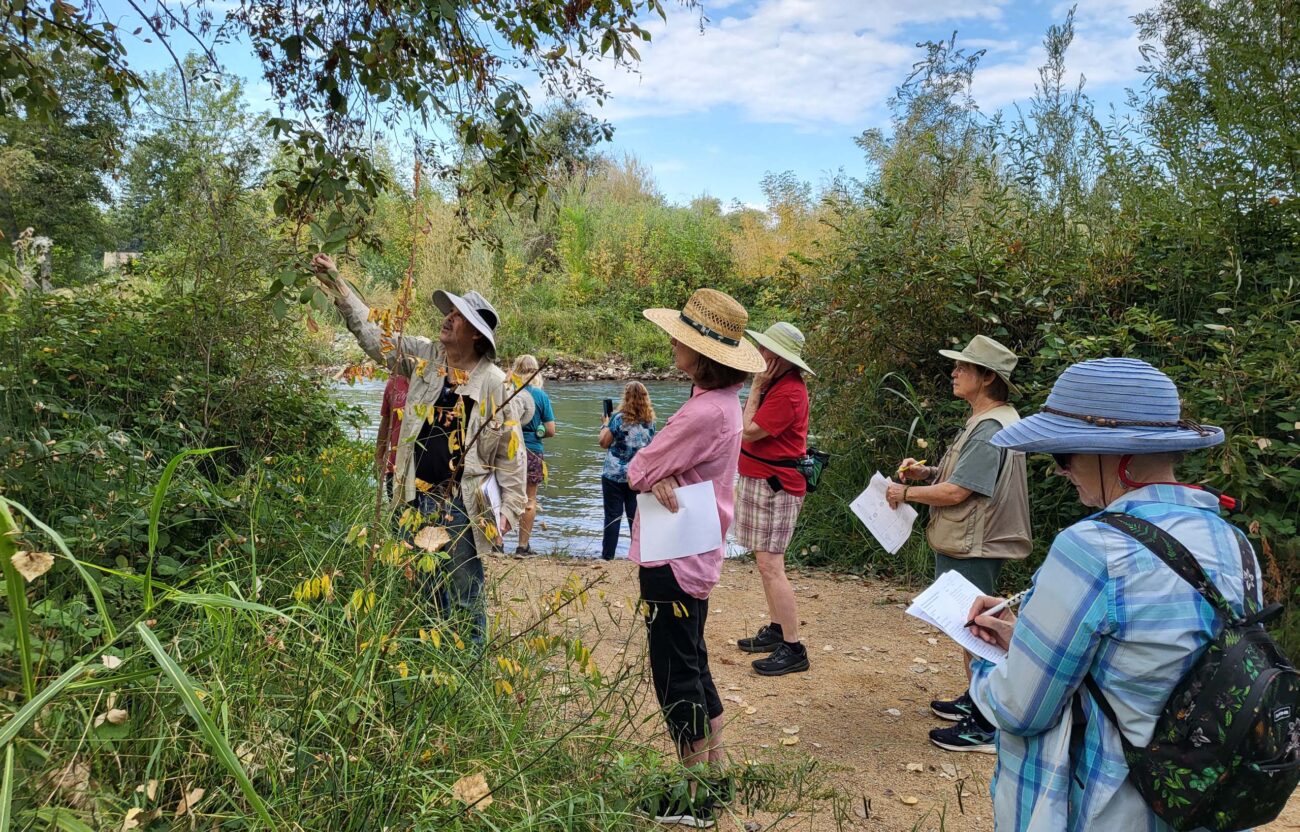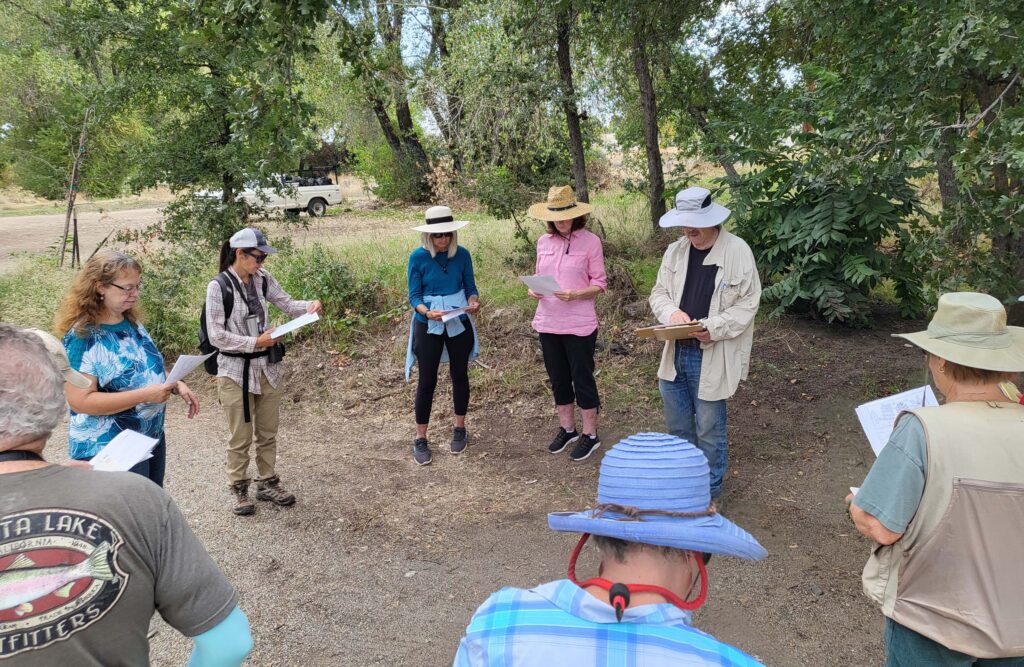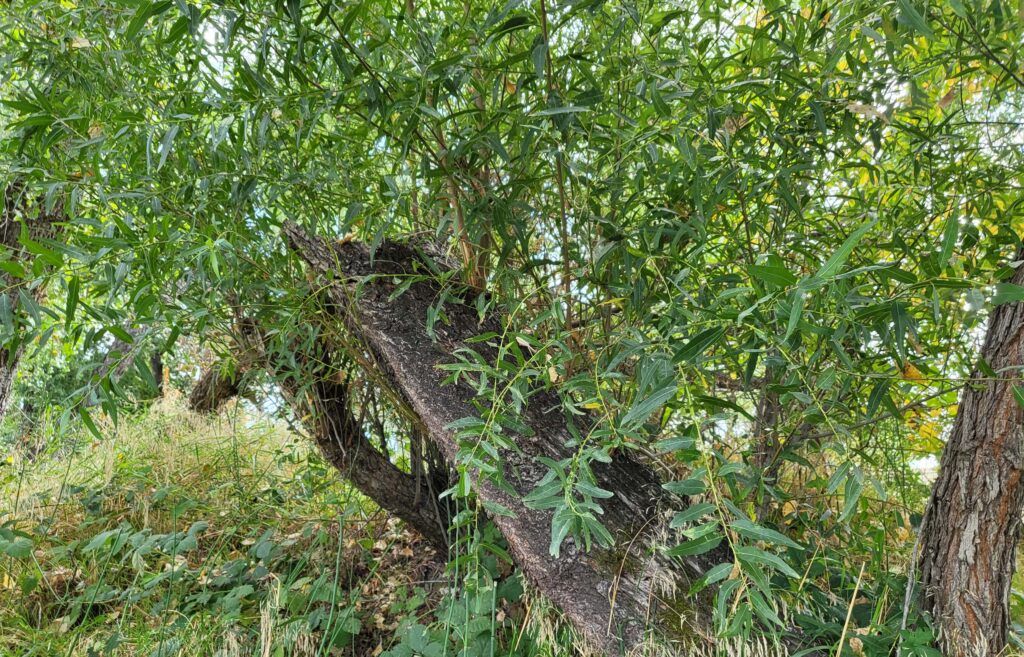
For this field trip, I decided to lead an easy walk and brush up on my fast-fading knowledge of botanical terminology at the same time. Focusing on leaf morphology, I broke out a plant taxonomy text book and The Jepson Manual (the bible of California botanists) to begin relearning the myriad names pertaining to the many and various aspects of leaf structure. Walk participants received a few photocopied pages from these sources.

The Nur Pon Open Space Area has been fenced off, is regularly patrolled, and is now a safe area to enjoy. It supports a wide variety of plants, from those that need to keep their “feet” in water next to a stream, to plants that thrive in much drier, open, hot areas. The soil in this area is so rich that, with the more than ample supply of water, some herbaceous plants grow two to four times taller than they would in drier, less fertile areas.

In addition to identifying various leaf shapes, features, and textures, we had a brief discussion about photosynthesis, as well as how water is transported from the roots to the pores (stomata) in the leaves. Several oak trees, three different willows, various shrubs, and herbaceous wildflowers (both native and non-native) were identified. Some of the non-natives I was not familiar with, but Andrea Claaseen and Doug Mandel were able to help identify them.
All 12 of us had a good time; the planned 90-minute field trip turned into 2½ hours, although we only walked about an hour. Spend some time at this beautiful open space starting now, and throughout the fall, to watch the the leaves gradually don their fall splendor! ~David Ledger
